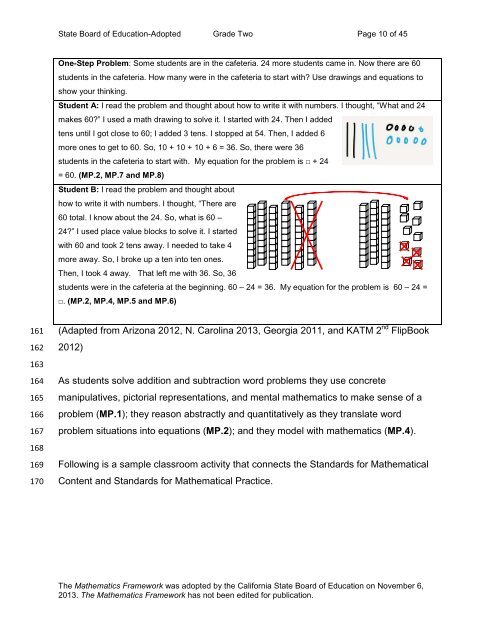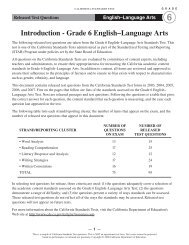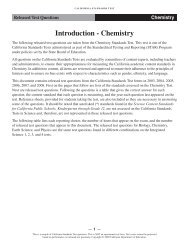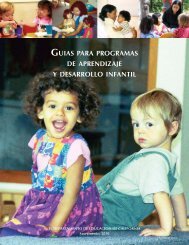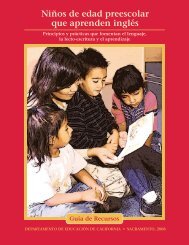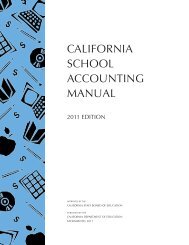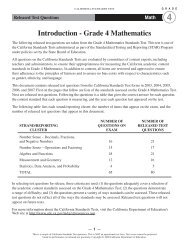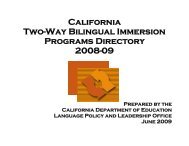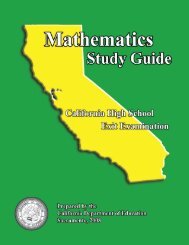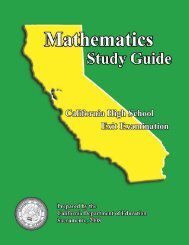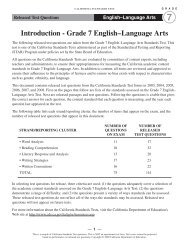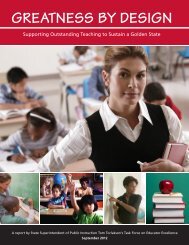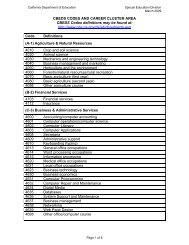Grade 2 - California Department of Education
Grade 2 - California Department of Education
Grade 2 - California Department of Education
Create successful ePaper yourself
Turn your PDF publications into a flip-book with our unique Google optimized e-Paper software.
State Board <strong>of</strong> <strong>Education</strong>-Adopted <strong>Grade</strong> Two Page 10 <strong>of</strong> 45<br />
One-Step Problem: Some students are in the cafeteria. 24 more students came in. Now there are 60<br />
students in the cafeteria. How many were in the cafeteria to start with? Use drawings and equations to<br />
show your thinking.<br />
Student A: I read the problem and thought about how to write it with numbers. I thought, “What and 24<br />
makes 60?” I used a math drawing to solve it. I started with 24. Then I added<br />
tens until I got close to 60; I added 3 tens. I stopped at 54. Then, I added 6<br />
more ones to get to 60. So, 10 + 10 + 10 + 6 = 36. So, there were 36<br />
students in the cafeteria to start with. My equation for the problem is □ + 24<br />
= 60. (MP.2, MP.7 and MP.8)<br />
Student B: I read the problem and thought about<br />
how to write it with numbers. I thought, “There are<br />
60 total. I know about the 24. So, what is 60 –<br />
24?” I used place value blocks to solve it. I started<br />
with 60 and took 2 tens away. I needed to take 4<br />
more away. So, I broke up a ten into ten ones.<br />
Then, I took 4 away. That left me with 36. So, 36<br />
students were in the cafeteria at the beginning. 60 – 24 = 36. My equation for the problem is 60 – 24 =<br />
□. (MP.2, MP.4, MP.5 and MP.6)<br />
161<br />
162<br />
163<br />
164<br />
165<br />
166<br />
167<br />
168<br />
169<br />
170<br />
(Adapted from Arizona 2012, N. Carolina 2013, Georgia 2011, and KATM 2 nd FlipBook<br />
2012)<br />
As students solve addition and subtraction word problems they use concrete<br />
manipulatives, pictorial representations, and mental mathematics to make sense <strong>of</strong> a<br />
problem (MP.1); they reason abstractly and quantitatively as they translate word<br />
problem situations into equations (MP.2); and they model with mathematics (MP.4).<br />
Following is a sample classroom activity that connects the Standards for Mathematical<br />
Content and Standards for Mathematical Practice.<br />
The Mathematics Framework was adopted by the <strong>California</strong> State Board <strong>of</strong> <strong>Education</strong> on November 6,<br />
2013. The Mathematics Framework has not been edited for publication.


